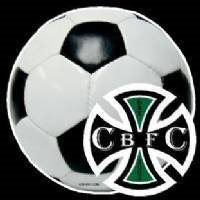
This is the third installment of the topic "what does it take to be a successful ODP player", I have already addressed four important technical qualities necessary for players to possess in order to be successful in this program they include (1) quality of the first touch, (2) the ability to strike a ball cleanly, (3) the ability to dribble to penetrate and to maintain possession, and (4) the ability to head the ball in attack and defense. The last technical area to be addressed will be:
(5) The ability to finish with their first touch—this may be the most difficult skill to master of all five of the technical qualities mentioned. I am not talking about composure on the ball, which also plays a big part of quality finishing; I am talking about the player's technical ability to strike on goal with their first touch. The player has to possess the ability to solve problems technically under intense pressure when receiving the ball close to their opponent's goal. There are many variables a player encounters in this situation, such as the position of the goalkeeper, the flight and pace of the pass they are about to receive, the position of defending players, etc., which forces the player to choose a technique to use to strike the ball at almost "warp speed". The biggest problem for young players is that many believe scoring goals is all about striking the ball with power. I am going to show my age here by quoting a line from the old FA Instructional films that were made after England won the World Cup in 1966, whenever a player missed a goal scoring opportunity by going for power instead of accuracy, the announcer would say "he went for power when clinical accuracy would have done him better". Landon Donovan is by far the best pure clinical finisher I have ever had the pleasure to work with at any playing level. When you watch him closely, his decision making as to what surface to strike the ball with, what pace to put on his finishing attempt and the placement of his this attempt are exceptional. Maybe this is why he holds the records for scoring goals with the US Men's National Teams at both the youth and senior levels. Another interesting fact is that something like 70% of all goals scored are scored from the player's first touch—more reason for the player to become comfortable with dealing with goal scoring opportunities with their first touch.

